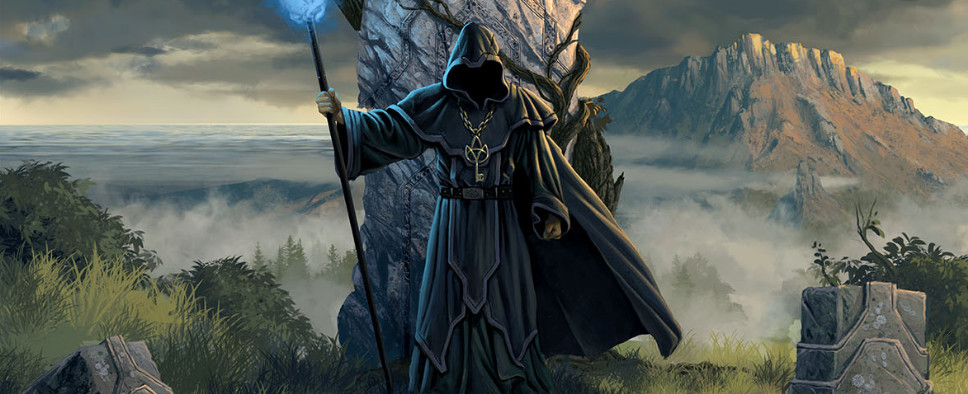Legend of Grimrock II Review
-
Category: ReviewsHits: 19988

Article Index
Introduction
Legend of Grimrock II is the follow-up to 2012's Legend of Grimrock, which provided a small but entertaining dungeon-crawling experience. Grimrock II is definitely a "more" sequel. It's over twice as long as the original game, and it has more classes, races, levels, puzzles, and secrets. It even has more colors, since the game escapes from the drab confines of dungeons and sends you to beaches, bogs, deserts, and -- you guessed it -- more. Oftentimes "more" isn't the same as "better," but this time it is.
Grimrock II doesn't have a lot to do with the original Legend of Grimrock. There isn't any way to import your party from the first game, and the events that unfold are only tangentially related to what happened before. At one point during the game, you see a reference to Mount Grimrock (where the first game took place), but that's it. Instead, Grimrock II revolves around the Isle of Nex. Your ship wrecks there, and you spend the rest of the game trying to make your escape -- all while an "Island Master" alternatively taunts you and encourages you on.
Character Development
The first thing you do in Grimrock II is create your party of up to four characters. Each character has a race and a class. The races are about the same as before, except that along with humans, insectoids, lizardmen, and minotaurs, you can also choose ratlings. But the classes got expanded quite a bit. The original Grimrock only had classes for fighters, rogues, and wizards, but now you can also add in alchemists, barbarians, battlemages, knights -- and of course farmers. Farmers are a curious case; instead of gaining experience from killing creatures, they only improve themselves by eating food.
Races and classes give characters special bonuses. For example, humans gain experience +10% faster than the other races, while ratlings can gain a random attribute point each time they level up. Meanwhile, knights are only encumbered by half the weight of their armor, while alchemists can "grow" any herbs they have in their inventory.
Characters also have attributes and skills. The attributes -- strength, dexterity, vitality, and wisdom -- didn't change at all, and they do about what you'd expect. But the skills were completely revamped. Instead of giving each class a unique set of six skills, there are now only 16 skills total, and each class can put points into any of them. Moreover, instead of the skills being maxed out at 50 points, they now max out at five points, but characters only receive one skill point per level (instead of five). Since characters only reach somewhere around level 15 in the game, that means they can completely learn two or three skills if they want, or they can spread the wealth around.
The nice thing about the new character system is that it gives you all sorts of options for how to put your party together. In the original Grimrock, just about every party consisted of two fighters, one rogue and a wizard, or one fighter, two rogues and a wizard, and the races didn't have much of an impact. But now the races and classes provide significant differences. With two points in the Accuracy skill, characters can use melee weapons from the back row, and so you can have a party of only minotaur fighters if you want. Or you might want to paste enemies from afar and use four ratling rogues instead. I didn't notice any discussions about the "best" party for the original Grimrock, but for the sequel I've seen a few, and they usually end up heated.
Combat
Legend of Grimrock II like its predecessor doesn't have much in the way of a story. You find yourself on a beach at the start of the game, and you just fight monsters and solve puzzles because they're there -- in abundance -- and because they frequently reward you with some nice loot. Not a whole lot has changed in the way that combat and the puzzles work, but it's clear that developer Almost Human took some notes about how people played the original Grimrock, and they made some improvements for the sequel.
Let me start with combat. Grimrock II is played in real time on a square grid. You move from square to square, and when you're facing an opponent, you can attack it. To attack, you just right-click on a character's weapon (shown next to their portrait in the lower right-hand corner of the screen), and then you wait for a cooldown so you can attack again. With four characters and dual-wielding allowed, this can be a lot of clicking, but since the cooldowns are usually in the range of 3-6 seconds, it's not too bad.
Spellcasters are a little more complicated, because for them to cast spells, they have to select the runes for a spell, and then activate the spell. In the original Grimrock, this frequently involved four clicks (or more) per spell, which provided a workout (and is one reason why parties only had one wizard). But now in Grimrock II, you can make "gestures" to cast spells. This sounded worrisome to me when I first read about it because I thought I was going to have to draw weird symbols in the air. In reality, it just gives you an easier way of selecting runes. Instead of clicking on them individually, you can simply run your mouse over them, and so casting now just requires a swipe and a click.

